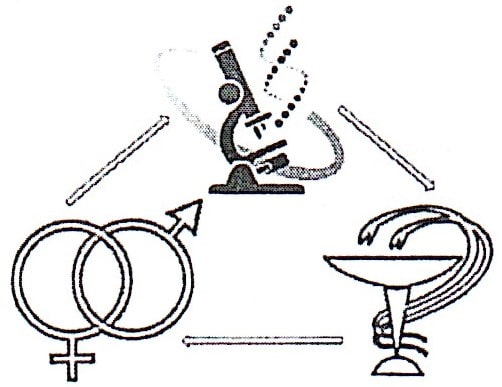Дослідження репродуктивних функцій свиноматок при згодовуванні хлорели
Анотація
Дослідження впливу хлорели, як додаткового джерела вітамінів та поживних речовин у вигляді суспензії та у складі гранульованого комбікорму на репродуктивні функції і продуктивність свиноматок, встановили збільшення кількості новонароджених поросят, їх середньодобовий приріст, підвищення молочності свиноматок та зменшення чисельності поросят, які хворі на діарею.
Завантаження
Посилання
Banoch, T., Fajt, Z., Kuta, J., Kotrbacek, V., Konecny, R., Travnicek, J., & Svoboda, M. (2011). Utilisation of iodine from different sources by sows and their progeny. Neuro endocrinology letters, 32(4), 510-517. Retrieved from http://www.nel.edu/userfiles/articlesnew/NEL320411A01.pdf.
Chen, J., Han, J. H., Guan, W. T., Chen, F., Wang, C. X., Zhang, Y. Z. ... Lin, G. (2016). Selenium and vitamin E in sow diets: II. Effect on selenium status and antioxidant status of the progeny. Animal Feed Science and Technology, 221, 101-110. doi.org/10.1016/j.anifeedsci.2016.08.021.
Chen, J., Han, J. H., Guan, W. T., Chen, F., Wang, C. X., Zhang, Y. Z. ... Lin, G. (2016). Selenium and vitamin E in sow diets: I. Effect on antioxidant status and reproductive performance in multiparous sows. Animal Feed Science and Technology, 221, 111-123. doi.org/10.1016/j.anifeedsci.2016.08.022.
Chervanev, V. A., Tarasenko, P. A., & Petrova, Z. G. (2011). Chlorella: improving reserve capacity in pig production. Svinovodstvo (Moskva), (1), 38-40.
Coffey, R. D., & Cromwell, G. L. (2001). Use of spray-dried animal plasma in diets for weanling pigs. Pig News and Information, 22 (2), 39–48.
Doucha, J., Lívanský, K., Kotrbáček, V., & Zachleder, V. (2009). Production of Chlorella biomass enriched by selenium and its use in animal nutrition: a review. Applied microbiology and biotechnology, 83(6), 1001-1008. doi: 10.1007/s00253-009-2058-9.
He, M. L., Hollwich, W., & Rambeck, W. A. (2002). Supplementation of algae to the diet of pigs: a new possibility to improve the iodine content in the meat. J Anim Physiol Anim Nutr (Berl), 86, 97-104. doi.org/10.1046/j.1439-0396.2002.00363.x.
Kotrbáček, V., Doubek, J., & Doucha, J. (2015). The chlorococcalean alga Chlorella in animal nutrition: a review. Journal of Applied Phycology, 27(6), 2173-2180. doi: 10.1007/s10811-014-0516-y.
Kotrbáček, V., Doucha, J., & Offenbartl, T. (2004). Use of Chlorella as a carrier of organic-bound iodine in the nutrition of sows. Czech J Anim Sci, 49, 28–32. doi.org/10.17221/4267-CJAS.
Kotrbacek, V., Filka, J., Ingr, I., & Dvorak, J. (1995). The effect of application of the alga Chlorella vulgaris on the occurrence of the pork defects. Zivocisna Vyroba UZPI. Retrieved from http://agris.fao.org/agris-search/search.do?recordID=CZ19960058527.
Kotrbáček. V., Doubek, J., Offenbartl, F., Holešovská, Z., & Doucha, J. (2005). Reproductive function in sows-possibilities of their influencing. Veterinarstvi, 55, 280–283. (in Czech).
Lange, C., Pluske, J., Gong, J., & Nyachotid, C. M. (2010). Strategic use of feed ingredients and feed additives to stimulate gut health and development in young pigs. Livestock Science.; 134, 124–134. doi.org/10.1016/j.livsci.2010.06.117.
Saeid, A., Chojnacka, K., Korczyński, M., Korniewicz, D., & Dobrzański, Z. (2013). Effect on supplementation of Spirulina maxima enriched with Cu on production performance, metabolical and physiological parameters in fattening pigs. Journal of applied phycology, 25(5), 1607-1617.
Shelton, N. W., Dritz, S. S., Nelssen, J. L., Tokach, M. D., Goodband, R. D., DeRouchey, J. M. ... & Mahan, D. C. (2014). Effects of dietary vitamin E concentration and source on sow, milk, and pig concentrations of α-tocopherol. Journal of animal science, 92(10), 4547-4556. doi.org/10.2527/jas.2014-7311.
Surai, P. F., & Fisinin, V. I. (2016). Selenium in sow nutrition. Animal Feed Science and Technology, 211, 18-30. doi.org/10.1016/j.anifeedsci.2015.11.006.
Svoboda, M., Saláková, A., Fajt, Z., Kotrbáček, V., Ficek, R., & Drábek, J. (2009). Efficacy of Se-enriched alga Chlorella spp. and Se-enriched yeast on tissue selenium retention and carcass characteristics in finisher pigs. Acta Veterinaria Brno, 78(4), 579-587. doi: 10.2754/avb200978040579.
Travieso, L., Benítez, F., Sánchez, E., Borja, R., Martín, A., & Colmenarejo, M. F. (2006). Batch mixed culture of Chlorella vulgaris using settled and diluted piggery waste. Ecological Engineering, 28(2), 158-165. doi.org/10.1016/j.ecoleng.2006.06.001.
Widjaja, A., Chien, C.-C., & Ju, Y.-H. (2009). Study of increasing lipid production from fresh water microalgae Chlorella vulgaris. Journal of the Taiwan Institute of Chemical Engineers, 40(1), 13–20. doi.org/10.1016/J.JTICE.2008.07.007.
Yan, L., Lim, S. U., & Kim, I. H. (2012). Effect of fermented chlorella supplementation on growth performance, nutrient digestibility, blood characteristics, fecal microbial and fecal noxious gas content in growing pigs. Asian-Australasian journal of animal sciences, 25(12), 1742-1747. doi.org/10.5713/ajas.2012.12352.
Yun, Y.-S., & Park, J. (2001). Attenuation of monochromatic and polychromatic lights in Chlorella vulgaris suspensions. Applied Microbiology and Biotechnology, 55(6), 765–770. doi.org/10.1007/s002530100639.
Zhu, L., Wang, Z., Shu, Q., Takala, J., Hiltunen, E., Feng, P., & Yuan, Z. (2013). Nutrient removal and biodiesel production by integration of freshwater algae cultivation with piggery wastewater treatment. Water Research, 47(13), 4294–4302. doi.org/10.1016/J.WATRES.2013.05.004.
Переглядів анотації: 2134 Завантажень PDF: 1206





